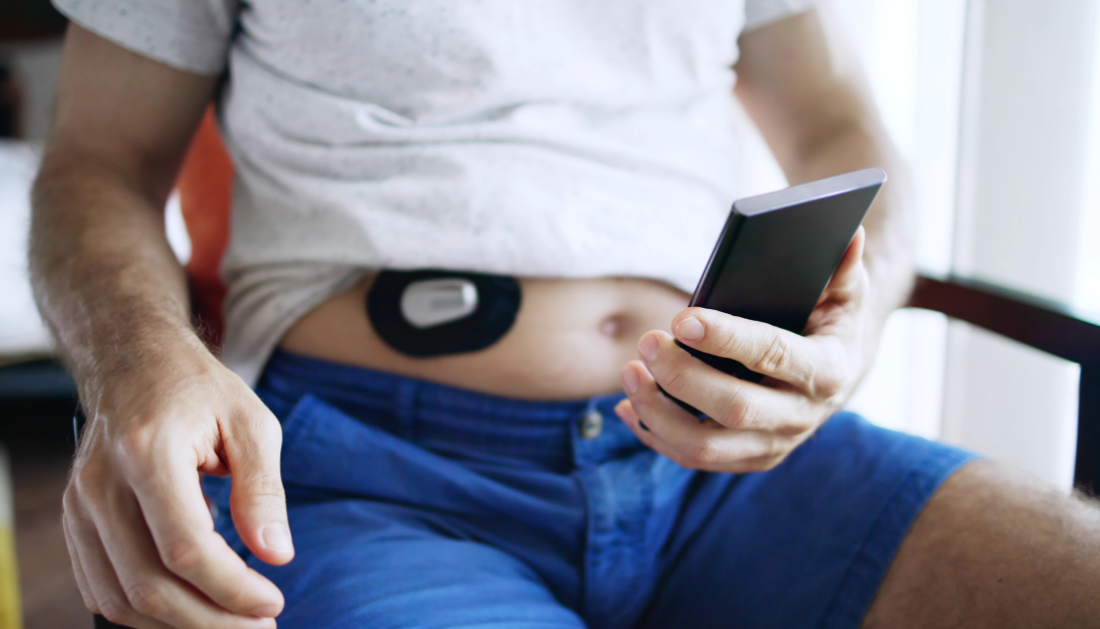

CGMs and Their Expanding Use
Originally developed for diabetes management, Continuous Glucose Monitors (CGMs) are now widely used by health-conscious individuals to track how foods impact their blood sugar levels. However, a new study from the University of Bath, published in the American Journal of Clinical Nutrition, raises concerns about their accuracy, particularly in healthy adults. Researchers found that Continuous Glucose Monitors (CGMs) may overestimate blood sugar levels, leading users to make unnecessary dietary changes.
Study Design and Key Findings
The research, conducted by the Center for Nutrition, Exercise, and Metabolism at the University of Bath, evaluated the accuracy of CGMs by comparing their readings to the gold-standard finger-prick test. The study involved healthy participants consuming various fruit-based products, including whole fruits and smoothies, while measuring blood sugar responses using both methods.
The results showed significant discrepancies:
- CGMs overestimated the glycemic index (GI) of smoothies by 30%, misclassifying them as medium-GI instead of low-GI as per finger-prick tests.
- Whole fruits were incorrectly classified as medium- or high-GI by CGMs, despite their actual low-GI status.
- CGMs exaggerated the time spent above healthy blood sugar thresholds by nearly 400%, which could cause unnecessary concern among users.
- The study also debunked the myth that blending fruit increases its glycemic index.
Implications for CGM Users
Lead researcher Professor Javier Gonzalez emphasizes that while CGMs are beneficial for people with diabetes, healthy individuals should be cautious when using them for dietary decisions. He explains that CGMs measure glucose in interstitial fluid, not directly in blood, leading to potential delays and discrepancies.
Helen Whitby, a nutritionist at Innocent Drinks, adds that fruits and smoothies provide steady energy without harmful glucose spikes, reinforcing the importance of accurate glucose tracking.
Future Research and Recommendations
The study highlights the need to improve CGM accuracy to prevent misleading results in non-diabetic users. Until then, finger-prick tests remain the most reliable method for assessing blood sugar levels and glycemic response.
More Information: Continuous glucose monitor overestimates glycemia, with the magnitude of bias 3 varying by postprandial test and individual—A randomized crossover trial, American Journal of Clinical Nutrition (2025). DOI: 10.1016/j.ajcnut.2025.02.024
more recommended stories
 How Soybean Oil Impacts Weight Gain and Metabolism
How Soybean Oil Impacts Weight Gain and MetabolismWhy Soybean Oil May Affect Metabolism.
 New Malaria Prevention Insights From African Biostatistics
New Malaria Prevention Insights From African BiostatisticsHow New Data Is Reframing Malaria.
 World Summit Outlines Core Principles for Healthy Longevity
World Summit Outlines Core Principles for Healthy LongevityWhy Healthy Longevity Demands a New.
 Gut Immune Cells and Long-Lasting Antiviral Protection.
Gut Immune Cells and Long-Lasting Antiviral Protection.Breakthrough Findings on How Gut Immune.
 Mild Pancreatic Duct Dilatation Signals Higher Cancer Risk
Mild Pancreatic Duct Dilatation Signals Higher Cancer RiskEarly Structural Changes Offer Critical Clues.
 Ultra-Processed Foods in Mediterranean Youth: Risks
Ultra-Processed Foods in Mediterranean Youth: RisksThe Mediterranean region is widely recognized.
 Intensive mind-body retreat rapidly alters brain function
Intensive mind-body retreat rapidly alters brain functionAn intensive mind-body retreat combining meditation,.
 Longevity Gene May Extend Lifespan Without Strict Diets
Longevity Gene May Extend Lifespan Without Strict DietsThe search for safe and realistic.
 Cholesterol-Lowering Drugs May Help Reduce PFAS Levels
Cholesterol-Lowering Drugs May Help Reduce PFAS LevelsPer- and polyfluoroalkyl substances (PFAS) continue.
 Citrus and Grape Compounds Help Prevent Type 2 Diabetes
Citrus and Grape Compounds Help Prevent Type 2 DiabetesA new clinical trial highlights the.

Leave a Comment